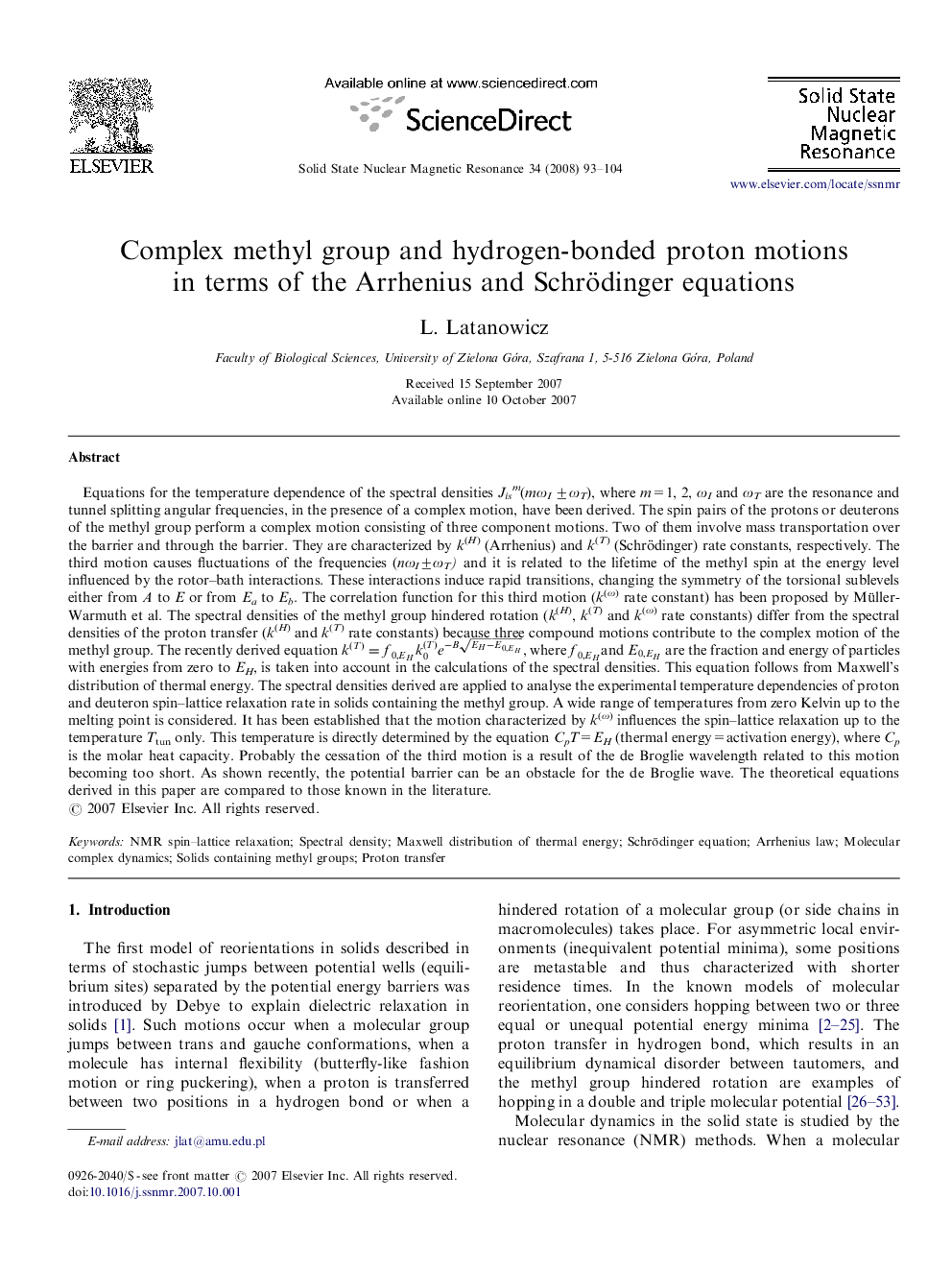| کد مقاله | کد نشریه | سال انتشار | مقاله انگلیسی | نسخه تمام متن |
|---|---|---|---|---|
| 5420694 | 1507514 | 2008 | 12 صفحه PDF | دانلود رایگان |
عنوان انگلیسی مقاله ISI
Complex methyl group and hydrogen-bonded proton motions in terms of the Arrhenius and Schrödinger equations
دانلود مقاله + سفارش ترجمه
دانلود مقاله ISI انگلیسی
رایگان برای ایرانیان
کلمات کلیدی
موضوعات مرتبط
مهندسی و علوم پایه
شیمی
شیمی تئوریک و عملی
پیش نمایش صفحه اول مقاله

چکیده انگلیسی
Equations for the temperature dependence of the spectral densities Jism(mÏI ±ÏT), where m=1, 2, ÏI and ÏT are the resonance and tunnel splitting angular frequencies, in the presence of a complex motion, have been derived. The spin pairs of the protons or deuterons of the methyl group perform a complex motion consisting of three component motions. Two of them involve mass transportation over the barrier and through the barrier. They are characterized by k(H) (Arrhenius) and k(T) (Schrödinger) rate constants, respectively. The third motion causes fluctuations of the frequencies (nÏI±ÏT) and it is related to the lifetime of the methyl spin at the energy level influenced by the rotor-bath interactions. These interactions induce rapid transitions, changing the symmetry of the torsional sublevels either from A to E or from Ea to Eb. The correlation function for this third motion (k(Ï) rate constant) has been proposed by Müller-Warmuth et al. The spectral densities of the methyl group hindered rotation (k(H), k(T) and k(Ï) rate constants) differ from the spectral densities of the proton transfer (k(H) and k(T) rate constants) because three compound motions contribute to the complex motion of the methyl group. The recently derived equation k(T)=f0,EHk0(T)e-BEH-E0,EH, where f0,EHand E0,EH are the fraction and energy of particles with energies from zero to EH, is taken into account in the calculations of the spectral densities. This equation follows from Maxwell's distribution of thermal energy. The spectral densities derived are applied to analyse the experimental temperature dependencies of proton and deuteron spin-lattice relaxation rate in solids containing the methyl group. A wide range of temperatures from zero Kelvin up to the melting point is considered. It has been established that the motion characterized by k(Ï) influences the spin-lattice relaxation up to the temperature Ttun only. This temperature is directly determined by the equation CpT=EH (thermal energy=activation energy), where Cp is the molar heat capacity. Probably the cessation of the third motion is a result of the de Broglie wavelength related to this motion becoming too short. As shown recently, the potential barrier can be an obstacle for the de Broglie wave. The theoretical equations derived in this paper are compared to those known in the literature.
ناشر
Database: Elsevier - ScienceDirect (ساینس دایرکت)
Journal: Solid State Nuclear Magnetic Resonance - Volume 34, Issues 1â2, JulyâSeptember 2008, Pages 93-104
Journal: Solid State Nuclear Magnetic Resonance - Volume 34, Issues 1â2, JulyâSeptember 2008, Pages 93-104
نویسندگان
L. Latanowicz,